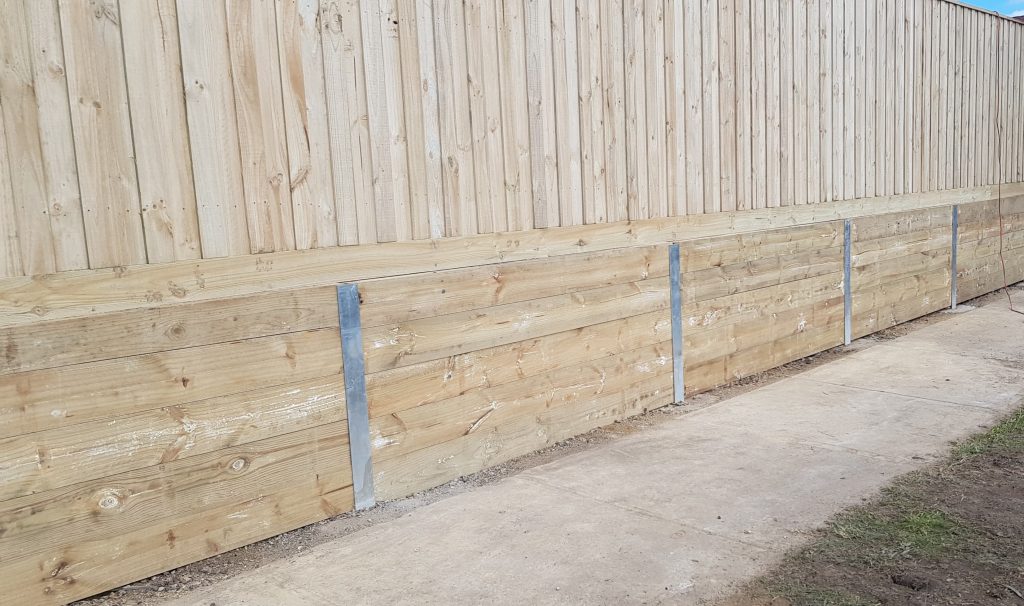Introduction
When it concerns home enhancement and landscaping, lots of aspects come into play. Among the most vital elements is the maintaining wall. It not only serves practical purposes however likewise enhances the visual appeal of your home. But have you ever wondered about the role of a retaining wall contractor? In this article, we'll check out how these experts go beyond simple construction, ensuring that your keeping wall stands strong and looks great for many years to come.
Retaining walls are essential for avoiding soil erosion, handling water runoff, and developing level surfaces in sloped areas. A retaining wall installer or builder should have a mix of technical knowledge, creativity, and task management abilities to provide an optimum solution customized to your specific needs.
The Role of a Retaining Wall Contractor: More Than Simply Building
A retaining wall contractor does a lot more than just hammer away at bricks and concrete. They are associated with every element of the task-- from the initial consultation to the final touches that make the installation really shine. Let's delve deeper into their responsibilities.
Understanding Customer Needs
The primary step in any project is understanding what the customer desires. An excellent professional will sit down with you to discuss your vision, expectations, and budget.
- What's Your Vision? Is it a simple stone wall for aesthetic appeal? Or do you require something more robust like a concrete sleeper wall for structural support? What's Your Budget? Understanding monetary restraints assists tailor solutions that fit both needs and wallet.
Site Assessment
Before breaking ground, a thorough evaluation of the site is essential:

- Soil Analysis: The kind of soil affects how well a wall will hold up. Drainage Considerations: Water management is crucial in preserving the stability of the wall over time.
Designing the Keeping Wall
Once customer requirements are comprehended and site assessments are finished, the enjoyable part begins-- designing!
Choosing Products Wisely
Different products serve various purposes:
- Concrete Sleepers: Resilient and versatile. H Beams: Best for heavy-duty applications. Wood Sleeper: Offers natural aesthetics but needs maintenance. Timber Sleeper: Comparable to wood however with included treatments for longevity. Stone Walls: Visually pleasing but can be cost-prohibitive.
Planning Regulations
Every area has its own building codes and guidelines regarding maintaining walls:
- Permits Required? A reliable specialist will help browse this complex landscape. Zoning Laws: Understanding what's allowed will conserve headaches later on.
Engineering Calculations
A solid structure is crucial to any effective maintaining wall. Engineers work alongside contractors to make sure:
- Proper load calculations Appropriate drain solutions
Preparation and Excavation
Preparation involves cleaning particles and excavating as needed:
Mark out where the wall will go. Dig trenches if necessary. Prepare base layers for stability.Installation Process
With whatever planned out, it's time for installation!
Laying Foundations
A strong structure involves multiple layers:
Base gravel Geotextile fabric Layering stones or blocksBuilding Upwards
Once the foundation is set, walls start taking shape:
- Stacking techniques differ based on materials. Proper alignment makes sure aesthetics and functionality.
Incorporating Drain Solutions
Effective drainage prevents water accumulation behind walls, which can cause failure:


Finishing Touches
What good is a stunning wall if it does not blend with your landscape?
Landscaping Around Keeping Walls
Adding plants or ornamental stones can improve visual appeal:
Native plants for sustainability Decorative rock featuresFAQ Section
1. What kinds of products do maintaining wall professionals use?
Contractors generally utilize concrete sleepers, wood sleepers, timber sleepers, H beams, or stone depending upon your requirements and budget.
2. How long does it take to construct a keeping wall?
The timeline differs based upon size and product; usually, expect anywhere from a few days to a number of weeks.
3. Do I require permits for building a maintaining wall?
Yes! The majority of regions need licenses due to zoning laws; always speak with your professional concerning local regulations.
4. Can I install a retaining wall myself?
While do it yourself might appear appealing, working with an experienced specialist ensures appropriate setup that stands up over time.
5. What upkeep do maintaining walls require?
Maintenance can consist of inspecting drainage systems regularly and replacing any broken sections as needed.
6. What happens if my retaining wall fails?
A failing maintaining wall can trigger considerable issues like soil erosion or home damage; it's best attended to instantly by professionals.
Conclusion
In summary, when considering installing a retaining wall on your residential or commercial property, it's clear that employing a skilled retaining wall contractor offers more than simply physical building; they bring expertise in design, engineering principles, regional regulations compliance, website management skills-- and far more! From conception through completion-- and even beyond-- they're essential in https://tuffstuffretainingwalls.com.au/ crafting functional yet visually attractive structures that stand up to time's test while boosting property value.
So next time you're considering adding one of these essential structures to your landscape, keep in mind: The function of a retaining wall contractor is undoubtedly much higher than just developing; it has to do with creating enduring quality while guaranteeing safety and appeal intertwine seamlessly!